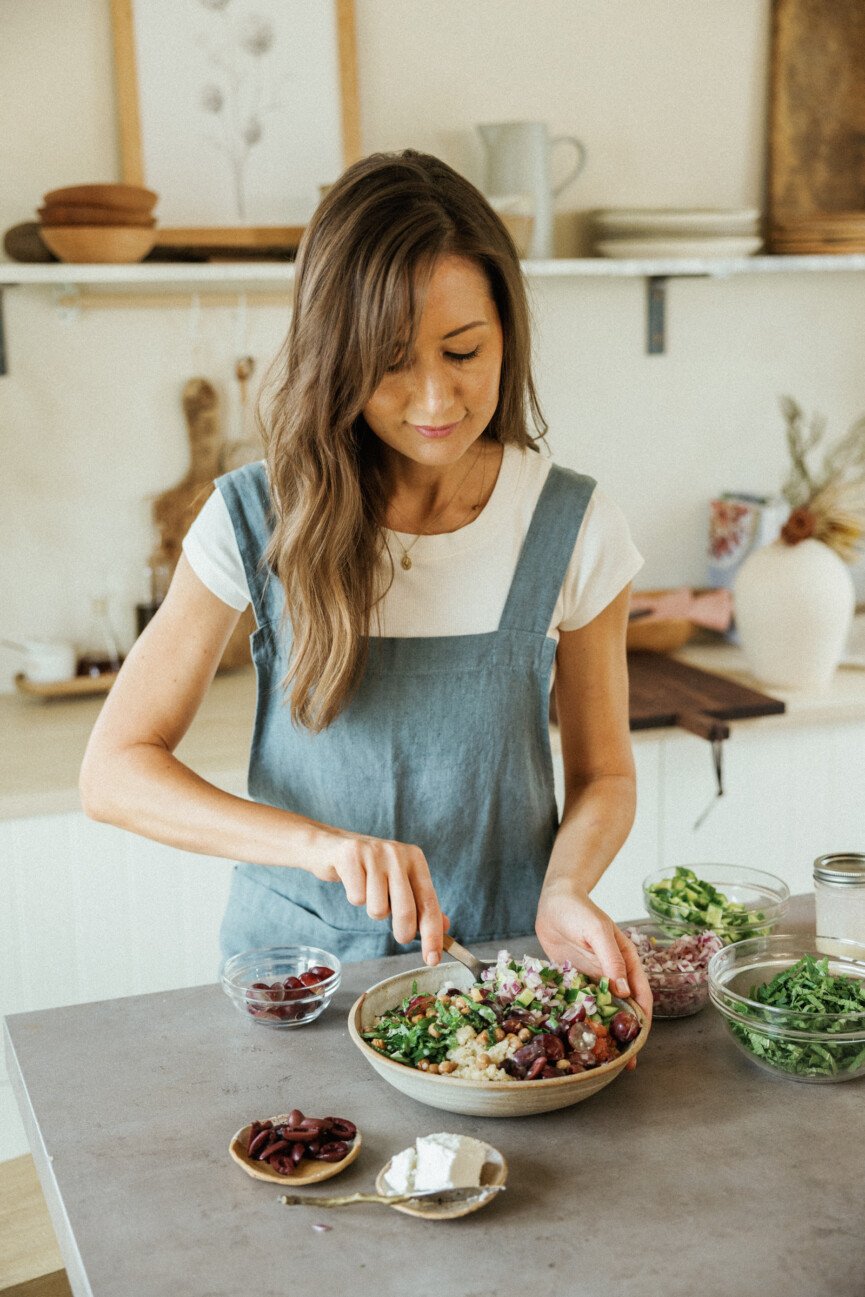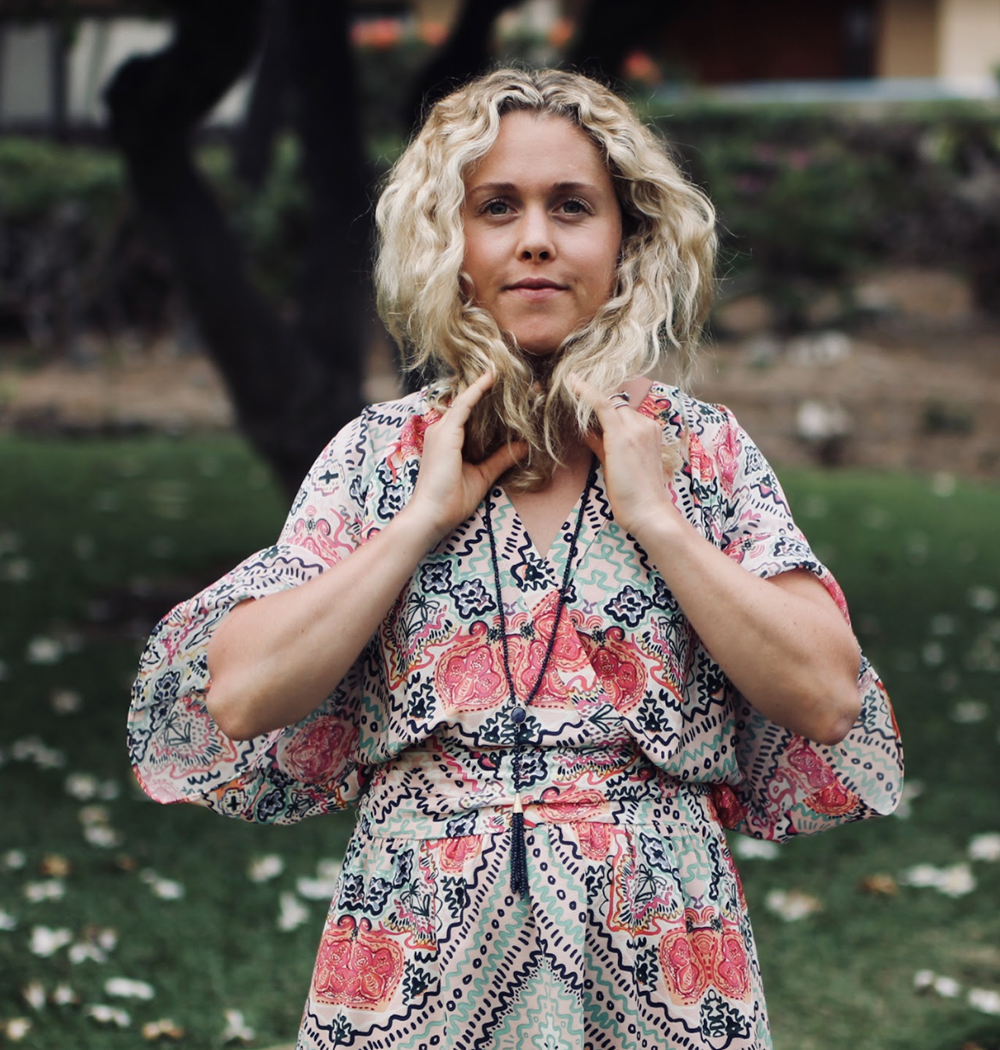My mom was diagnosed with DCIS when I was a sophomore in college (a non-invasive, early form of breast cancer). Her diagnosis felt urgent, shocking, and deeply personal. From that moment forward, breast health wasn’t just something I’d think about later. Fast-forward to today: I’m a 35-year-old mom of two little ones, and my mom’s diagnosis is never far from my mind. To honor that awareness, I turn to a monthly breast self-exam. While it’s not exactly sexy, this ritual helps me stay connected to my body (and most importantly, feel confident if something changes). Below, I’m sharing what breast health looks like in my 30s—and why it feels less like fear, and more like empowerment.

Why Breast Health Matters More in My 30s
Our 30s are a fascinating intersection: hormones are shifting, careers and caregiving often demand most of our energy, and self-care can feel like it gets pushed to the back burner. But this is also a decade where prevention is powerful (read: potentially life-saving). Research shows that lifestyle factors—like diet, movement, sleep, and stress management—play a crucial role in breast health. And since my mom’s diagnosis, I’ve felt compelled to learn what I can do now to support my future self.
Embracing a Holistic Approach
Unlike the way it’s often framed, breast health isn’t purely clinical. It’s a holistic, proactive practice. Yes, mammograms and clinical screenings are essential parts of monitoring breast health, but there’s so much more to consider. Breast health also involves things like lymphatic flow and nutrition choices that reduce inflammation. Let’s take dry brushing, for example. This beautiful practice helps stimulate the lymphatic system, which plays a key role in moving toxins in the body! In other words, breast health isn’t just something to check off at your next appointment—it’s a daily practice.
How I’m Proactively Supporting My Breast Health
Before we dive into how to do a breast self-exam, here are some of the habits and practices I currently lean into:
Lymphatic Health
Dry brushing, daily exercise, and staying well-hydrated support lymphatic circulation. These are all essential for moving toxins and hormones through the body effectively.
Nutrition
I focus on foods that help metabolize estrogen—cruciferous veggies like broccoli, cauliflower, and Brussels sprouts are staples. Alongside those, plenty of fiber, healthy fats, and antioxidant-rich berries support not just breast tissue but overall hormonal balance.
Supplements
While individual needs vary, I prioritize vitamin D, magnesium, and omega-3 fatty acids—all of which have been linked to reducing inflammation and supporting hormone health.
Annual Screenings
Even though routine mammograms are often recommended starting at age 40, my family history means I’m in regular conversation with my doctor about earlier screenings and additional imaging.
Foods to Eat for Breast Health
When it comes to breast health, diet plays a crucial role in supporting hormone balance, reducing inflammation, and promoting overall wellness. But with so much conflicting information out there, it can be tough to know what to trust—especially when it comes to foods like soy. Let’s start with foods to embrace:
- Cruciferous veggies. Broccoli, cauliflower, Brussels sprouts, and kale contain compounds called glucosinolates, which help the body metabolize estrogen more effectively. Supporting estrogen metabolism is key for breast health and hormone balance. I keep this copycat Erewhon kale salad in my weekly rotation!
- Fiber-rich ingredients. Whole grains, fruits, vegetables, and legumes help your body eliminate excess estrogen by promoting healthy digestion and regular bowel movements.
- Healthy fats. Omega-3 fatty acids found in walnuts, flaxseeds, chia seeds, and fatty fish help reduce inflammation, which can protect breast tissue.
- Berries and antioxidant-rich foods. Blueberries, strawberries, and other antioxidant-packed foods combat oxidative stress and support cellular health.
What about soy?
Soy often gets a bad rap because it contains phytoestrogens—plant compounds that can mimic estrogen in the body. However, current scientific research suggests that moderate soy consumption is safe and may even be protective against breast cancer, especially when consumed as whole foods like tofu, tempeh, and edamame. It’s different from consuming highly processed soy isolates or supplements in large quantities.
For most women, including moderate amounts of whole soy foods as part of a balanced diet can support breast health rather than harm it.
Foods to Limit (or Avoid) for Breast Health
To no surprise, highly processed foods and added sugars can ramp up inflammation and throw your hormones out of balance (which isn’t great for breast tissue over time). Trans fats and hydrogenated oils—those sneaky ingredients in many snacks and baked goods—also fuel inflammation, so it’s best to keep those to a minimum. And while enjoying a drink now and then is totally fine, drinking alcohol regularly is linked to a higher risk of breast cancer.
Making Breast Self-Exams a Ritual
Intimidated by doing a breast self-exam? That was me. Would I know what to look for? What if I found something? But the truth is, it doesn’t need to be complicated (or scary). Ultimately, your goal is to understand how your breasts typically look and feel, so you can recognize any new or unusual changes. Here’s how I’ve made it a ritual—instead of a chore—and you can too:
- Pick a consistent time each month: I like to do mine a few days after my period, when breast tissue is least likely to feel tender or swollen. Ideally, do your exam a few days after your period ends, too—when your breasts are least likely to be swollen or tender. If you don’t menstruate, choose a consistent day each month.
- Use different positions: I check in the shower, lying down, and in front of a mirror (because different angles reveal different things). Standing up, look at your breasts with your arms at your sides, then raise them overhead. Check for any visible changes like dimpling, puckering, redness, or changes in nipple position. When lying flat, use the pads of your three middle fingers to gently press in small circles, covering the entire breast and armpit area. Use different levels of pressure—light, medium, and firm—to feel all the tissue layers.
- Notice, don’t obsess: The goal is to know what your normal feels like, so that if something changes—a new lump, thickened tissue, or skin changes—you’ll recognize it.
Science backs this up: while clinical screenings catch things that a home exam may not, studies show that women who know their own baseline are more likely to detect changes early. To me, that’s worth the few minutes each month.
FAQ: Your Breast Health Questions Answered
Q: How often should I do a breast self-exam?
A: Once a month is a good rhythm. Try to do it around the same time each month, usually a few days after your period ends.
Q: Can breast self-exams prevent breast cancer?
A: Breast self-exams don’t prevent breast cancer, but they help you become familiar with your breasts and detect changes early. Early detection is key for successful treatment.
Q: What if I find a lump?
A: Easier said than done, but don’t freak out. Many breast lumps are benign (non-cancerous). Regardless, if you notice a new lump or change, schedule a visit with your doctor to get it checked out.
Q: Are mammograms still necessary if I do self-exams?
A: Yes! Mammograms and clinical breast exams by a healthcare professional are important parts of breast cancer screening. Self-exams are an additional tool, not a replacement.
Q: What if I don’t have a family history of breast cancer?
A: While family history is a risk factor, most breast cancers occur in women without a family history. Regular self-exams and screenings are valuable for everyone.
Q: Can lifestyle changes really impact breast health?
A: Absolutely. Maintaining a healthy diet, regular exercise, managing stress, and avoiding tobacco and excessive alcohol can all support breast health and overall well-being.


Breast Health, Reframed
To bring this full circle, our boobies deserve consistent care, awareness, and compassion. Rather than dread your self-exams or screenings, see them as empowering reminders that you have agency over your health. No matter your age, this type of self-care is essential, not indulgent.
And while the “what ifs” can feel overwhelming, focus on what you can do. For me, that means monthly self-exams, daily choices that support my hormones, and staying in touch with my doctor. For you, it might be starting small—setting a monthly calendar reminder or adding cruciferous veggies to your plate. Remember: your breast self-exam isn’t just a routine—it’s a ritual of self-respect.

Edie Horstman
Edie is the founder of nutrition coaching business, Wellness with Edie. With her background and expertise, she specializes in women’s health, including fertility, hormone balance, and postpartum wellness.
camillestyles.com (Article Sourced Website)
#Breast #Health #Routine #Feeling #Confident
